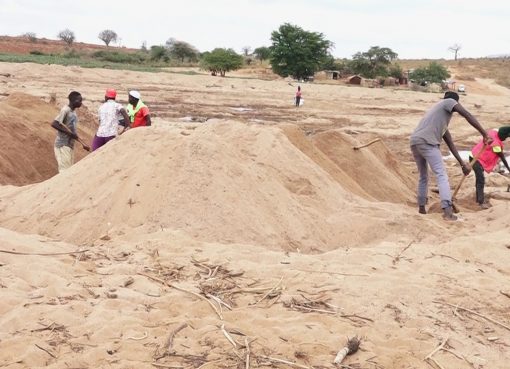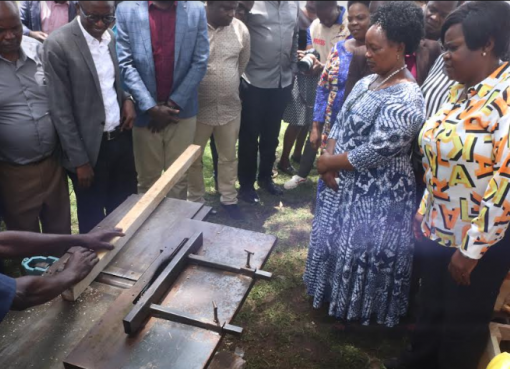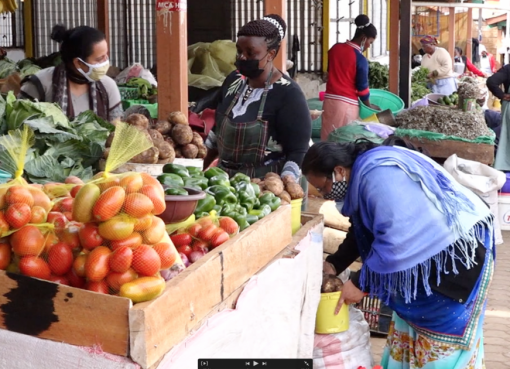As the world celebrates World Food Day on October 16, farmers across the country are grappling high aflatoxin levels in maize that has not only brought misery in terms of losses but has also threatened the nation’s food security.
It is for this reason that one technician in Laikipia decided to come up with an innovative idea where he has designed a simple but effective maize drying machine that he hopes, will bring to an end the losses incurred by farmers due to poorly dried grains.
David Burii said his innovative idea was driven by the erratic weather conditions that characterizes Laikipia County and designed the maize drying machine two years ago, adding that it has a capacity to dry between 30 to 50 bags of maize per day to the recommended moisture level of below 13.5 percent.
“Sometimes the rains go beyond the harvesting period, thus leading to huge losses for farmers since the maize starts to rot in farms before harvest, this made me think of a way of lifting the burden of drying maize,” Burii said at his workshop in Mwireri village in Umande location.
Short rains that normally pound the region during harvesting time leave maize farmers with huge losses as it makes their maize crop to rot. Perennially these farmers have been depending on sunshine to dry the commodity.
The machine, powered by a small petrol engine that consumes just one litre a day, dries six bags of maize in about two hours, depending on the moisture content but takes less time on grain that is harvested while almost dry.
“This drying machine is suited for large scale maize farmers as well as those who grow the crop on a small scale. In times when one is not using it, it can be hired out to other farmers in need of drying their grain,” Burii said.
A welding and fabrication graduate of Nanyuki polytechnic, Burii used simple materials to assemble the drier that include black iron sheet, square tubes pipes, angle line bars, pulleys, a petrol engine and canvas.
“I was motivated to start this project after I realized that most farmers plant and harvest maize very well but during shelling and drying, one ends up losing everything,” said Burii.
The new maize drier, Easy Dry, that uses maize cobs as fuel to dry the crop has come in handy and now farmers can easily dry their harvest with ease and get guaranteed returns.
“I started by trying to fix up scrap metals for roughly a year. Later on, I got someone who supported my idea and funded me to the tune of Sh.55, 000 to acquire aluminum sheets as raw materials, which I then pieced together to come up with this drier,” the innovator said.
The two-compartment equipment that has a petrol motor attached to the combustion chamber to help in fanning the heat has also a mesh rack that can accommodate six sacks at a time.
Drying the maize under the sun takes up to three sunny days and over a week during the rainy season and is prone to contamination.
“You can now dry more maize in a day unlike in the past. The drier is very reliable during any season,” said Burii.
The machine sources its energy from a fire that is gotten from lighting maize cobs from the shelled maize. The warmth is then directed to the maize with the excess heat and smoke being churned out through a chimney at the side.
In May last year, Laikipia county government scouted for innovations and out of the 205 participants at the fair held in Nyahururu town, the County settled on 50 innovators who impressed the judges, Burii being one of them.
The County Governor, Ndiritu Muriithi said that his government would assist the innovators with training, funding from the Laikipia Enterprise Fund, certification from Kenya Bureau of Standards (KEBS) and in acquiring copyright for their innovations.
“We are also facilitating them with product promotion through various marketing platforms such as media, trade fairs, exhibitions, and social media,” said Muriithi.
He added that the program intended to build a more robust job creation environment for residents.
Burii, a father of four, seeks to give a new lease of hope to farmers in the area, who produce an average of 10 bags per household. He further says he has sold several of the machines to farmers in North Rift counties as well as in Tanzania and Rwanda.
By Martin Munyi




